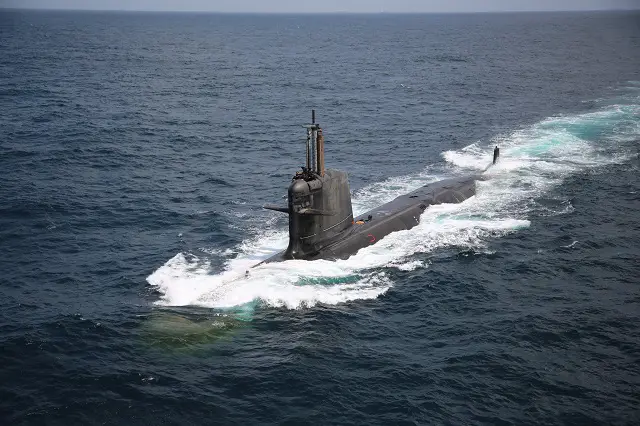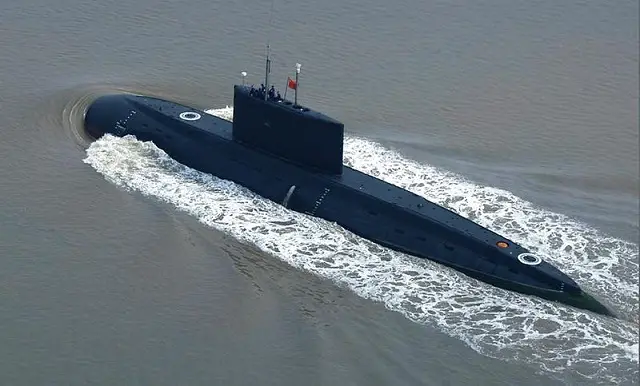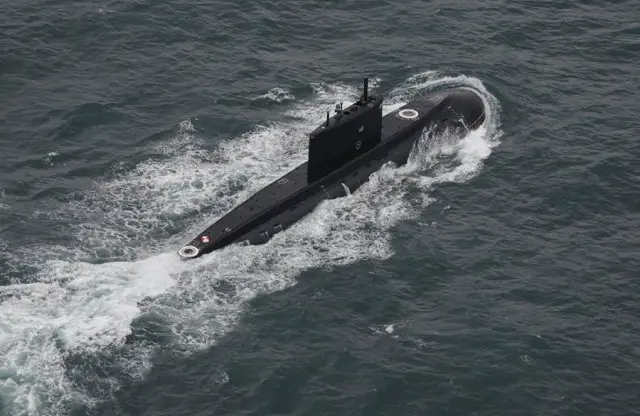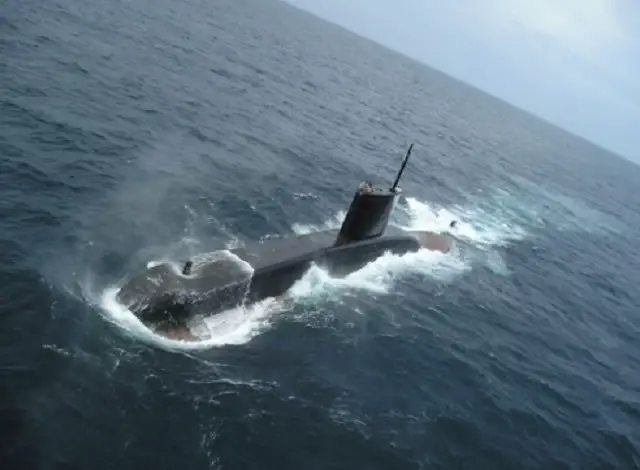Breaking news
Russia may face challenges with diesel submarines on world market - Part 2.
| 2017
|
|
|||
 Khanderi, the second of the six Scorpene class submarines built locally for the Indian Navy, started sea trials on June 1st, 2017. Indian Navy picture. Khanderi, the second of the six Scorpene class submarines built locally for the Indian Navy, started sea trials on June 1st, 2017. Indian Navy picture. |
|||
|
There is another technical detail which can play into the French hands if Project 75I tender is announced. The MDL facility cannot produce other than Scorpene submarines.
The French also have an important trump card which is the serially produced MESMA air-independent propulsion. It is a separate autonomous module which can be installed both on new subs under construction or old ones under modernization. The serial propulsion gives the French a good modernization potential which the Indian market may need in the near future. As for Russia, the head of the Navy shipbuilding department Rear Admiral Vladimir Tryapichnikov said the Navy hopes to get an air-independent propulsion unit for non-nuclear submarines in 2021-2022. Even if the deadline is observed, the unit will have to undergo test operations, eliminate drawbacks and only then become operational, receive an export passport and enter the market. |
|||
|
|
|||
 A Chinese 636 Kilo-class SSK. Picture: Took-ranch at English Wikipedia A Chinese 636 Kilo-class SSK. Picture: Took-ranch at English Wikipedia |
|||
|
Executive Director of the Krylov State Research Center Mikhail Zagorodnikov believes the absence of air-independent propulsion units for Russian submarines can strip them of demand on the naval hardware market. "Diesel-electric submarines (with air-independent propulsion) are produced by France, Germany, China, and South Korea. India is beginning to produce the submarines together with France. We shall lose the market if we do not create air-independent power plants," he said.
China can hardly be considered a potential buyer of Russian submarines at present. The strategic partner acquired good experience in the operation of 12 Russian diesel-electric submarines of project 877EKM and 636 and began to design such U-boats itself. Moreover, China developed from a submarine importer into exporter and sold eight of its U-boats to Pakistan and one to Thailand. It means the competition on the global market of diesel-electric submarines between Russia, Germany, France and the Netherlands is growing and a new player China has joined the group of rivals. |
|||
|
|
|||
 Russia's new Project 636.3 (Varshavyanka) diesel-electric submarine (SSK) "B-261 Novorossiysk" transiting in Belgium's EEZ. File Picture: Belgian Navy Russia's new Project 636.3 (Varshavyanka) diesel-electric submarine (SSK) "B-261 Novorossiysk" transiting in Belgium's EEZ. File Picture: Belgian Navy |
|||
|
Excluding 12 Russian submarines, the total number of U-boats built by the Chinese shipbuilding industry in 20 years (1995-2016) comprised 44 units which corresponds to an average construction rate of two submarines a year. Such pace allows China to satisfy the needs of its Navy and implement export contracts for U-boat construction.
Thus, competition on the global market of submarines has intensified of late. It is to remembered that the currently implemented state defense order for six diesel-electric subs of project 636 for the Pacific fleet and several U-boats of project 677 will be completed in the coming years and future orders will be cut from 2020. As a result, the Admiralty Shipyard may lack load on its facilities which are experienced in the production of diesel-electric submarines both for the domestic Navy and for export. The problem is to be tackled already now. Russian presidential aide for military-technical cooperation Vladimir Kozhin said at the international IMDS-2017 naval show that foreign interest in Russian subs remains. Indonesia, the Philippines and Thailand want to buy Russian submarines of project 636. "This U-boat enjoys most demand and practically all our clients, including Indonesia and the Philippines are interested in it. We completed supplies to Vietnam. Now it is the turn of Indonesia, the Philippines, Thailand," he said. © Copyright 2017 TASS. All rights reserved. This material may not be published, broadcast, rewritten or redistributed. Check out the Part 1 of the article at this link. |
|||





























 A Shishumar-class submarine underway. Indian Navy picture.
A Shishumar-class submarine underway. Indian Navy picture.